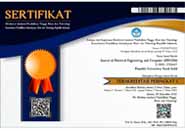Deep Learning Models For Youtube Sentiment Analysis: A Comparative Study Of Bert And Gru In Danantara Indonesia
Authors (s)
(1) M. Alfa Rizy (AMIKOM University of Yogyakarta)
Indonesia
(2) * Ema Utami

 (AMIKOM University of Yogyakarta)
(AMIKOM University of Yogyakarta) Indonesia
(*) Corresponding Author
AbstractThis study aims to analyse public sentiment toward Danantara Indonesia through YouTube comments and compare the performance of two deep learning models, BERT and GRU, in sentiment classification. The dataset consists of 1,065 comments collected through scraping techniques, which were pre-processed and classified into three sentiment categories: positive, neutral, and negative. The results indicate that the IndoBERT model achieved 100% accuracy, with perfect precision, recall, and F1-score for all sentiment classes. In contrast, the GRU model only achieved 60% accuracy, showing a tendency to classify almost all comments as negative sentiment. Sentiment distribution analysis reveals that the majority of comments (60%) express negative sentiment, followed by positive sentiment (25%) and neutral sentiment (15%). The dominance of negative sentiment suggests public distrust and criticism regarding the policies and transparency of Danantara Indonesia. These findings demonstrate that BERT is a more accurate model for sentiment analysis of Indonesian-language texts. Furthermore, this study recommends further evaluation to address data imbalance and improve the model’s generalization across various social contexts in digital media.
|
Keywords
Sentiment Analysis; Deep Learning; BERT; GRU; YouTube
Full Text: PDF
Refbacks
- There are currently no refbacks.
Copyright (c) 2025 Ema Utami

This work is licensed under a Creative Commons Attribution License (CC BY-SA 4.0)
Journal of Electrical Engineering and Computer (JEECOM)
Published by LP3M Nurul Jadid University, Indonesia, Probolinggo, East Java, Indonesia.








